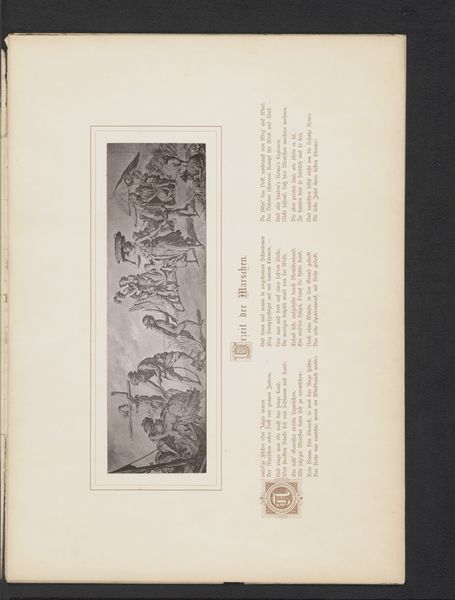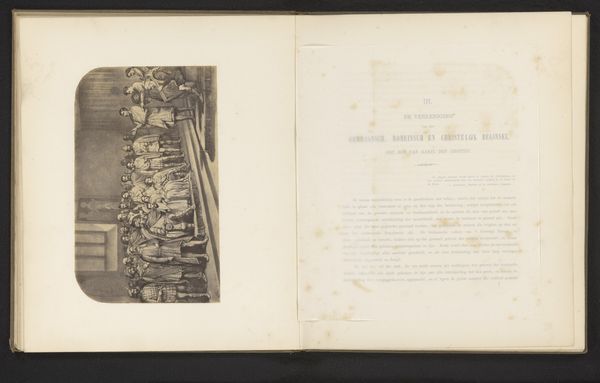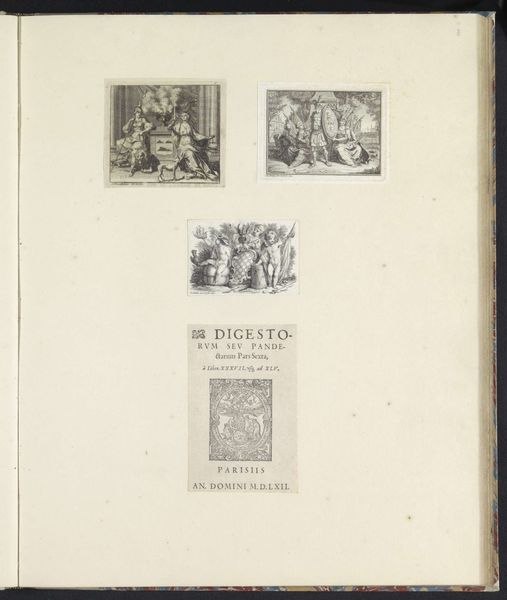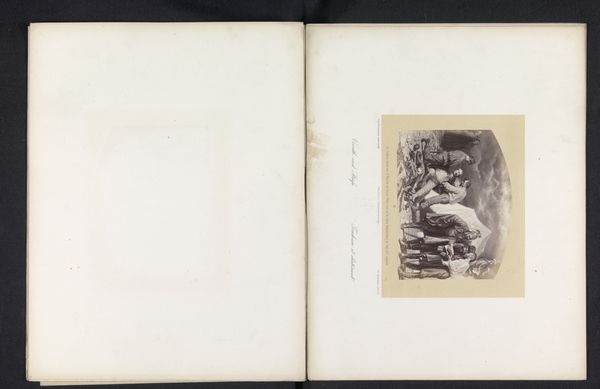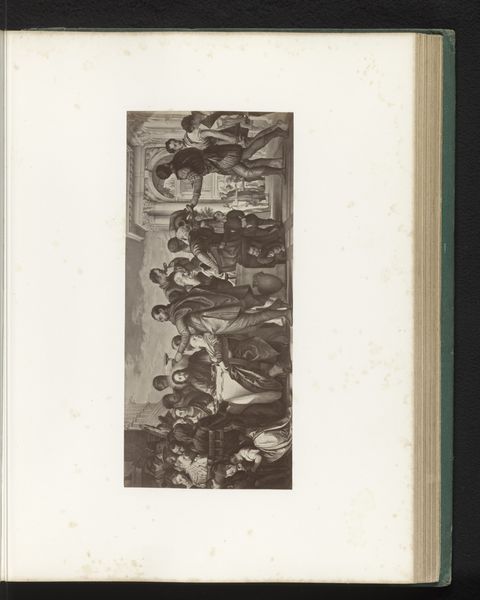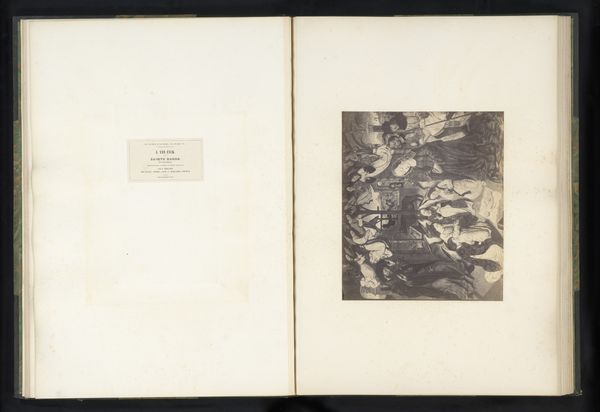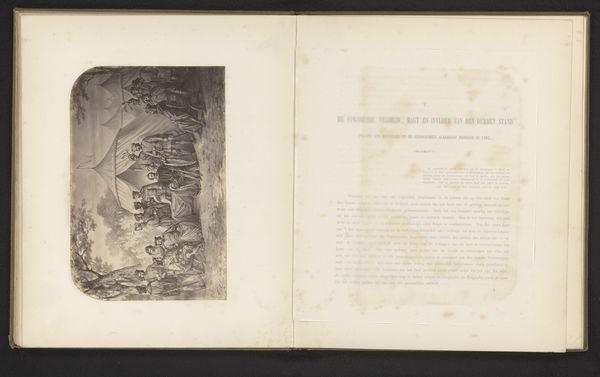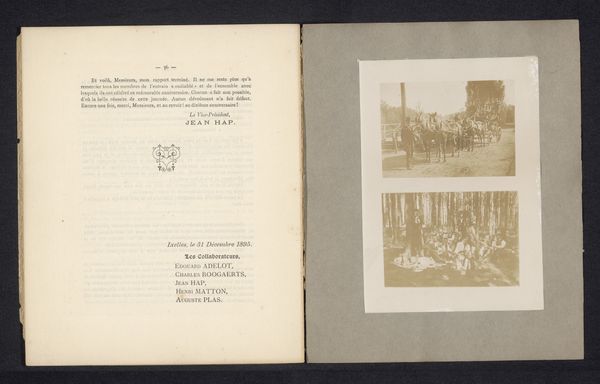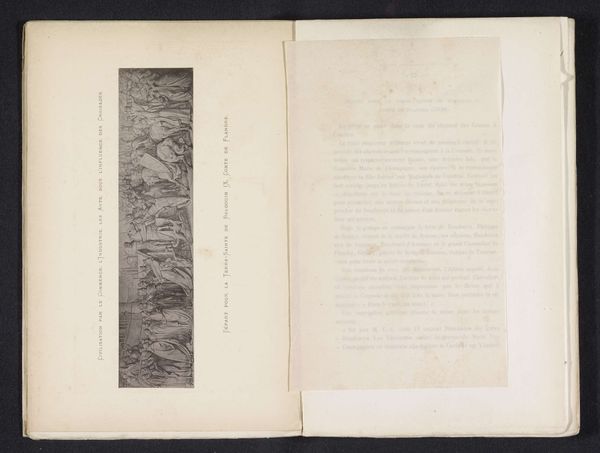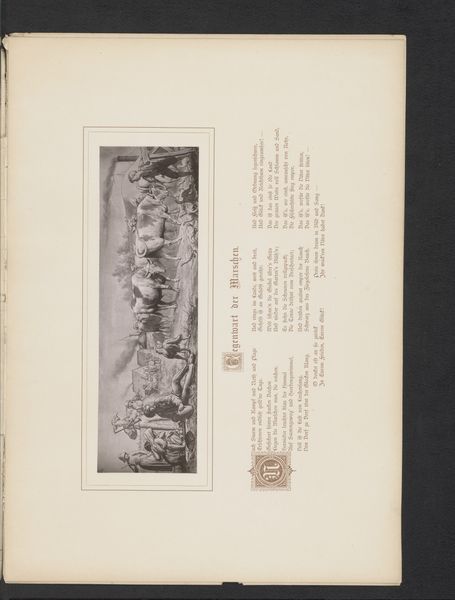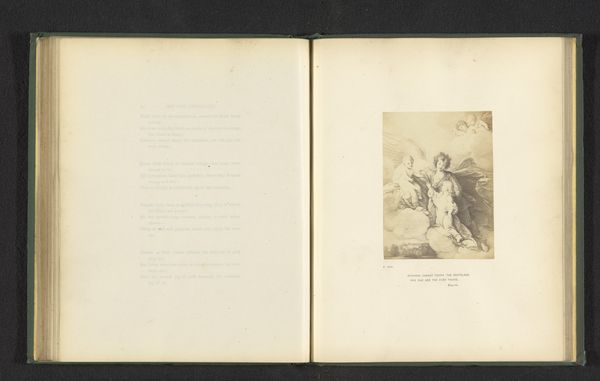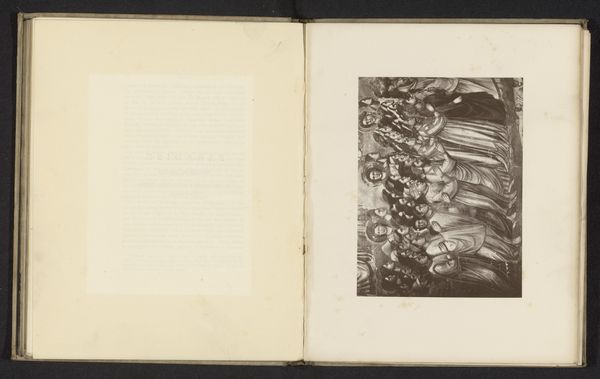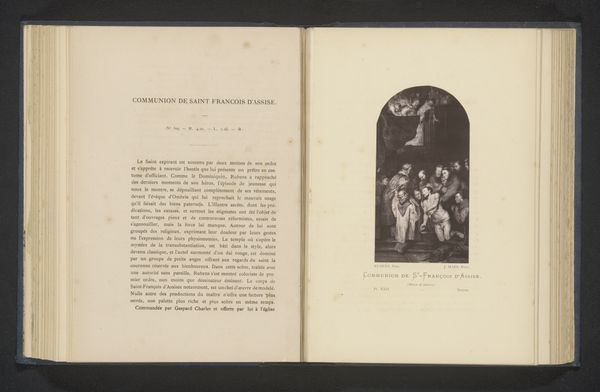
Reproductie van een schilderij van een rechtbank voor boeren door Heinrich von Dörnberg before 1881
0:00
0:00
Dimensions: height 80 mm, width 262 mm
Copyright: Rijks Museum: Open Domain
Curator: Here we have a reproduction of a courtroom scene by Heinrich von Dörnberg, dating from before 1881. It appears to be a print, possibly an engraving, set on what looks like a page from a book. What strikes you first about this piece? Editor: It's the density of figures packed into a compressed pictorial space. There is almost no breathing room, a cacophony of gestures, darks and lights. A sort of frenzy is at work. Curator: It's important to remember this "peasant court" references an existing cultural trope. These kinds of judicial parodies where local, uneducated folk arbitrate—usually satirizing formal legal systems. Editor: The artist’s use of chiaroscuro amplifies this, doesn’t it? See how faces emerge then recede into darkness, intensifying the scene’s emotionality and chaotic energy. Also, notice how the print has been placed in this rectangle. It frames the drama effectively. Curator: Precisely! And that typeface accompanying the image underscores this blend of high and low culture. This wasn’t merely decorative; it likely served as a caption or even the source text for a larger critique against institutions of power. Editor: The tight cropping of the artwork really adds to the drama, by keeping the scene right in front of us as the viewers. Also, you can tell how the age of the paper influences its feel as a medium: it is something historical with layers and texture. Curator: Von Dörnberg probably sought to portray something larger than a simple anecdote. This print likely challenged audiences, nudging them to examine notions of justice. I do wonder how this imagery may have influenced or played into existing sociopolitical discussions happening during the end of the 19th century. Editor: Seeing it laid out this way has let me consider how space—or rather, the denial of it—impacts the dynamics. All these things blend and clash into the scene creating visual tension. Curator: A fitting final word, truly. This exploration reminds us how even a seemingly simple historical scene can hold complex socio-historical commentary.
Comments
No comments
Be the first to comment and join the conversation on the ultimate creative platform.

